Do We Need Archive Film Festivals? (Film Review Article)
The 14th Gosfil’mofond Festival, Belye Stolby, Russia, February 1-6, 2010
South of Moscow’s Domodedovo Airport lies the microraion Belye Stolby [White Pillars], home to Gosfil’mofond, the State Film Fund. It is housed in a tall, red building. An eye-catching circle crowns the façade, cutting a hole in the steel blue sky, and reminding me of film reels, or perhaps the shiny metal canisters in which films are stored. It is February. Black and white birches (another meaning of Belye Stolby) protrude from the deep snow. This is the Russian Homeland for Old Films–specifically, for prints which have been “retired” from active life in regular film distribution, and now rest in this realm called Gosfil’mofond.
Most of the time they lie comfortably in the precisely maintained temperature and humidity of the storage vaults in one of the largest film archives in the world. Once a year, however, at the Belye Stolby Festival, dozens of these monochrome films leave their repositories to be screened in a capacious, half-spherical cinema hall, where their black and white images echo the birches surrounding the vaults.
The archive is famous primarily for its rare, older holdings; millions of meters of black and white film date from as far back as the early 20th century. Prints and sometimes even negatives date from pre-revolutionary Russia and the USSR. It was here, in Gosfil’mofond, that forbidden films were meticulously locked away in a process euphemistically called “shelving,” but really referring to this system of institutionalized censorship. Ironically, having received so little use, these shelved films now survive in the best condition. Gosfil’mofond also holds a considerable portion of the Reichsfilmarchiv, a thrilling trophy from World War II which includes an array of French, British, Polish, Czech, Italian, Hungarian, and American films.
In October 2008, Gosfil’mofond celebrated its 60th anniversary and the collection still continues to grow.(This was also the year when the new premises were inaugurated – following the award of the State prize to Nikolai Borodachev, the director of the archive, his deputy Vladimir Dmitriev and preservation specialist Irina Vasina in 2007. This was obviously an important act of appreciation of the cultural importance of the archive which is not financed by the ministry of culture but funded directly by the government.) Currently holding over 65,000 titles, the archive receives around 1,000 new films per year (a print of films in distribution, together with the negative if the film was produced with the addition of state funds).
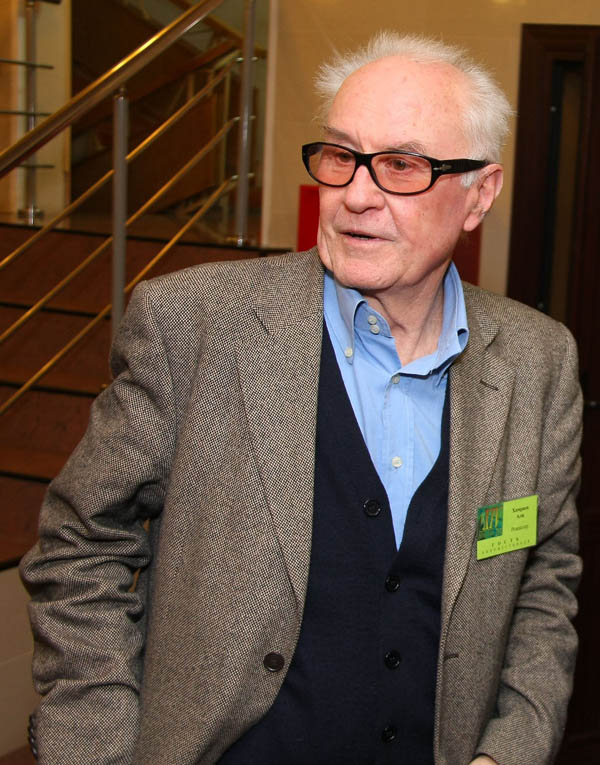 Therefore, when during the festival the Uzbek director, Ali Khamraev (White Cranes [Belye, belye aisty], 1966, Bo-Ba-Bu, 1999), described Gosfil’mofond as “the mausoleum of film,” I did not initially find this metaphor particularly apt, as it seems to imply that archival films are effectively dead. On further reflection, however, I began to appreciate Khamraev’s analogy. He apparently imagined the Gosfil’mofond archive as functioning somewhat like the Lenin mausoleum; a shrine of modernity, a museum serving both as spectacle and as a promise of eternity, free from any religious connotation.(Some 20th century mausoleums were or still are exhibiting bodies of Communist rulers. It seems to be an alternative to the venerations of relics as tangible memorials of Saints’ biographies. Lenin in Moscow (1924), Georgi Dimitrov (1949) in Sofia, Klement Gottwald (1953) in Vítkov: (http://www.youtube.com/watch?v=baggXp1iMvo).) Far from being unflattering, Khamraev was instead expressing a hope that these films may be preserved in “eternal storage.”
Therefore, when during the festival the Uzbek director, Ali Khamraev (White Cranes [Belye, belye aisty], 1966, Bo-Ba-Bu, 1999), described Gosfil’mofond as “the mausoleum of film,” I did not initially find this metaphor particularly apt, as it seems to imply that archival films are effectively dead. On further reflection, however, I began to appreciate Khamraev’s analogy. He apparently imagined the Gosfil’mofond archive as functioning somewhat like the Lenin mausoleum; a shrine of modernity, a museum serving both as spectacle and as a promise of eternity, free from any religious connotation.(Some 20th century mausoleums were or still are exhibiting bodies of Communist rulers. It seems to be an alternative to the venerations of relics as tangible memorials of Saints’ biographies. Lenin in Moscow (1924), Georgi Dimitrov (1949) in Sofia, Klement Gottwald (1953) in Vítkov: (http://www.youtube.com/watch?v=baggXp1iMvo).) Far from being unflattering, Khamraev was instead expressing a hope that these films may be preserved in “eternal storage.”
Films Kissed to Life
The modern mausoleum has a very different purpose from traditional graves which conceal buried remains. The mausoleum instead aims to instill remembrance through its dual capacity as an exhibit. The sight of the deceased displayed fully intact is a rather striking visual experience–like Snow White lying in her glass sarcophagus, waiting for the Prince whose kiss will restore her to life.
Embalming the dead has always been connected with a belief in the after-life, and also, more recently, with a hope of a physical reanimation, as was the case with Lenin. Even if Soviet science could not revive him, the mausoleum has been in existence for almost 90 years now, “working” to do just that, surviving even iconoclastic periods. It was not abolished by Gorbachev or Yeltsin, and continues to thrive under Putin and Medvedev.
If one assumes that post-distribution film prints can similarly achieve some kind of “after-life,” then an archive that compares itself to a mausoleum must ensure that these films are ready to be brought back to life at any moment by the kiss of the projector’s beam. The importance of screening an archive’s holdings, therefore, cannot be underestimated. This practice provides a platform open to access by scholars. Films which would otherwise be inaccessible join the circuit of programming, are spotted by DVD publishers, and find new audiences. Preservation and conservation of the archive holdings, if costly, are equally essential to ensuring continued access for future generations. The best storage environment must be maintained–in particular, nitro prints require special storage in a cool depository. These practices also find a parallel with those of mausoleums, as sometimes the help of chemicals is needed, a process distinctly reminiscent of embalming. Additionally, exhibition of the preserved prints to the public is vital for the archive itself, serving to successfully justify its very existence. All in all, the idea that the archive is a modern mausoleum for prints turns out to be surprisingly fitting.
Archivists, as well as filmmakers, often extend this metaphor by designating the different periods of a human life to corresponding moments in the life of a film. A film’s birth is sometimes accompanied by great fanfare, with screenings at international Festivals, and it then proceeds to live through its distribution both in Cinemas and on DVD. Finally, it retires, or in more dramatic terms, it dies. This is the moment when the physical elements, prints and negatives, ideally make their way into an archive.
A film can also die, that is decompose, in a much more literal sense, due to its steady, self-catalyzed deterioration–the decomposition of highly flammable nitrocellulose or the vinegar syndrome of its acetate successor, the so called safety film. The stability of digital copies over time remains to be seen. In this respect, film certainly merits comparison to a living organism in need of constant supervision, attention and care.
Not all film prints can be easily revived from their “sleeping” state, and many require some work before they can be presented once more to an audience. For example, many early silent films survive without intertitles. Before the film can be presented, the film curator must search for lost librettos, names of actors, and detailed descriptions of the plot in film reviews. The presentation of such recent reconstructions of previously lost or inaccessible films comprises one of the most competitive sections of the festival, “Archival Rarities”. Vladimir Dmitriev, the artistic director of the festival, declared as much in his keynote address, saying that this section will be of increasing importance to the festival’s programming.
Creative Curation, Belated Premieres and Archive Festival Prizes
Another role of the film archivist is creative curation, a task which includes scoping out opportunities to screen prints. In the Belye Stolby festival, this is a regular occurrence in the section, “Great Centennials–Velikie stoletiia,” in which bygone film premieres are commemorated in a systematic manner, around the time of each film’s anniversary. Some are remembered by screenings, others through a mnemotechnic device in the form of a red anniversaries booklet presented to each participant. This year, the celebrated films (or fil’my-iubilary) included Princess Tarakanova (100 years), Ordinary Fashism (45 years) or Dersu Uzala (35 years).
One long-awaited screening was of Vsegda na-cheku [On the Watch] (1972-3, 70 mm, color) by Yefim Dzigan.(The first film in the planned two part series: Na severe, na iuge, na vostoke, na zapade [North, South, East and West].) This film was never distributed, as the changed political landscape of 1973 meant that it was out of step with the times, with détente was on itsway. According to Dmitriev, there was not a single 35 mm print made, and it had not even been shown in “internal” viewings. So it had a late premiere at Belye Stolby 2010. This hilarious take on Cold War ideology shows American agents emerging from under sheets of ice (!) on the Crimean shore. Soviet frontier guards and their volunteer helpers (druzhina) follow them around wherever they go. This somewhat naïve thriller was thoroughly appreciated by the notoriously demanding festival audience.
This year, the program also seemed especially well laid out, containing several exciting rediscoveries. Among them was the 1966 short film by documentary film maker Dzhemma Firsova: Puteshestvie [Journey], based on a novella by Vasilii Aksënov (1932-2009). There were also some pleasant surprises for lovers of American film, such as Abraham Polonsky’s (1910-1999) film noir in blank verse, The Force of Evil (1948), and rarities like Frank Borzage’s Big City (1937).
The festival prizes usually reflect achievements in the section “Archival Rarities” (film restorations and reconstructions). Traditionally, the winners are established with a secret vote by all of the festival’s attendees. This year, however, it was a bit different; the Jury gave prizes to three foreign guests: Vladimír Op?la of National Film Archive, Prague; the German film historian and curator Hans-Joachim Schlegel (Viktor Demin Prize for history and theory of film); and the Japanese film expert Kadzuo Yamada.
The whole event is a remarkable achievement on the part of the Archive–the planning and organization of this festival was accomplished without hiring any extra staff. This, no doubt, is how it managed to maintain its original and intimate character, one grounded in the hospitality of the archive itself.
Festival Genres, Participants and Audience
![‘I do not know this man.’ ‘Confrontation [Ochnaia stavka]’, 2008, All-Russian State University of Cinematography (VGIK).](https://artmargins.com/wp-content/uploads/2018/04/Ochnaia_Stavka.jpg) We normally expect festivals to air the latest previews, but here in Belye Stolby it is quite the opposite: the older the material the better. Films taken exclusively from the Archive are brought out and programmed to comprise the entirety of sections like “Great Centennials,” “In Memoriam” (directors and actors who died in 2009), “Confrontation,” and “Archival Rarities.”(This year the topic was Ivan the Terrible, last year it was Ukraine in the 1940s, in 2008 the Prague Spring.) The sections this year were complemented by several retrospectives or thematic blocks, including “The Forbidden Yefim Dzigan,” “Russian Film Emigration,”(Programmed by Natalia Nusinova and Sergei Kapterev, the block was in two halves: The East (several rare films about/with White emigrants in formerly Russian Harbin, Mandzhuria, among them the film My Nightingale, produced in Russian under Japanese occupation in 1943), and the West (Volga En Feu, 1934, by Viktor Turzhanskii/Boris de Fast, filmed in Prague). Borzage’s Big City (1937) is also about Russian emigrants in the USA United States and the imminent deportation of the heroine (played by Jewish immigrant of 1935, Luise Rainer), married to an American cab driver (Spencer Tracy).) and “????? ??? the Tchekhovs” (sic), programmed by Valeri Bosenko. This last featured an elegantly melancholic comedy directed by Olga Tschechowa/Chekhova, starring her ex-husband Mikhail Tchekhov/Chekhov as the strikingly eccentric Fool of His Own Love [Narr seiner Liebe] (1929; produced by Tschechowa-Films).
We normally expect festivals to air the latest previews, but here in Belye Stolby it is quite the opposite: the older the material the better. Films taken exclusively from the Archive are brought out and programmed to comprise the entirety of sections like “Great Centennials,” “In Memoriam” (directors and actors who died in 2009), “Confrontation,” and “Archival Rarities.”(This year the topic was Ivan the Terrible, last year it was Ukraine in the 1940s, in 2008 the Prague Spring.) The sections this year were complemented by several retrospectives or thematic blocks, including “The Forbidden Yefim Dzigan,” “Russian Film Emigration,”(Programmed by Natalia Nusinova and Sergei Kapterev, the block was in two halves: The East (several rare films about/with White emigrants in formerly Russian Harbin, Mandzhuria, among them the film My Nightingale, produced in Russian under Japanese occupation in 1943), and the West (Volga En Feu, 1934, by Viktor Turzhanskii/Boris de Fast, filmed in Prague). Borzage’s Big City (1937) is also about Russian emigrants in the USA United States and the imminent deportation of the heroine (played by Jewish immigrant of 1935, Luise Rainer), married to an American cab driver (Spencer Tracy).) and “????? ??? the Tchekhovs” (sic), programmed by Valeri Bosenko. This last featured an elegantly melancholic comedy directed by Olga Tschechowa/Chekhova, starring her ex-husband Mikhail Tchekhov/Chekhov as the strikingly eccentric Fool of His Own Love [Narr seiner Liebe] (1929; produced by Tschechowa-Films).
One of the best-loved films of the festival was based on Chekhov’s prose and featured Viacheslav Tikhonov (double agent Isaev/Shtirlits in 17 mgnovenii vesny [17 Moments of Spring] who died in 2009. The episode shown was, “Ot nechego delat’” [From Lack of Anything to Do] from Semeinoe shchast’e [Family Happiness] (1970, dir.: Sergei Solov’ëv).
The “Restorations and Reconstructions” section of the program has increasingly become a fascinating showcase for work being done in the archive itself and for projects by curators using archive materials. The festival affords the unique possibility of discussing these (mostly unpublished) film reconstructions, as well as allowing the experts to tell the inside story. This year, the topic centered mainly around early color and sound in film. Nikolai Maiorov restored the original pastel colors in several 1930’s and 1940’s animated films. Among them was Tchudesnyi svetofor [The Enchanted Traffic-Light] (1938) about an owl regulating traffic with the help of one red and one green eye–a big hit with the learned audience. Then there was the presentation by Nikolai Izvolov, which aimed to link his latest finds from the 1910’s to the Chekhov anniversary. In it, he showed two “film declamations” with a new recording of an actor reading Chekhov’s stories. This screening demonstrated how many silent films of that time must have been presented with a textual background–quite literally, the words would have been recited behind the screen. Thus, through such creative production techniques, these hitherto rather inaccessible films were truly given new life.
Two of the most acclaimed films were made the Vasil’ev brothers. Neveroiatno – no fakt (Miaso, mekh, pukh) [Incredible but true (Meat, Fur, Downs)] (1932) is about the benefits of rearing rabbits for the USSR (encouraging the Komsomol to take over this task) while Spiashchaia krasavitsa [Sleeping Beauty] (1930), fragments of which were shown as a late screening in the press office, is a breathtakingly lit, photographed, and cut film based on a screenplay by Grigorii Aleksandrov. The festival is mainly targeted at Russian film scholars. There are also some film critics, along with guests who understand Russian as the films are not subtitled and foreign films often get a Russian voice-over.
Filmmakers Working With the Archive
Indeed, archives like Gosfil’mofond are not only cherished by historians and scholars. Film Archives and their predecessors have always been of great importance tothe filmmakers themselves. In Russia, as in other countries, the directors of documentary films are interested in working with archive footage. In addition to this, the Soviet Union has had a tradition of filmmakers working with archive film in a rather creative way. Deriving from necessity, namely the shortage of raw filmstock following the revolution, this tradition manifested itself in Esfir’ Šub’s compilation films using Romanov home movies and Czarist chronicles (Padenie dinastii Romanovych [The Fall of The Romanov Dynasty], 1927). Mikhail Romm would follow in her footsteps forty years later. Romm, incidentally, was the originator of this year’s festival motto praising the institution of the archive for enabling him to use film footage produced by the vanquished enemy; “Gosfil’mofond is the best film archive in the world, with a highly cultured [kul’turnyi] staff.”
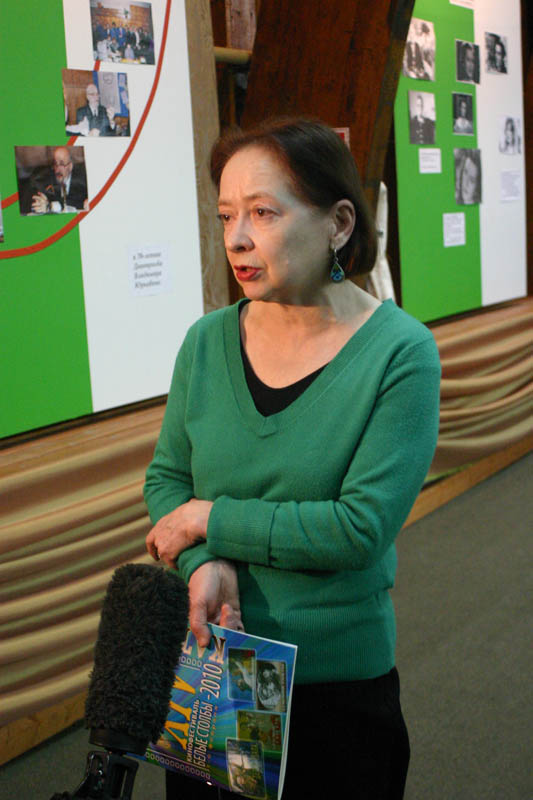 Even today, under certain circumstances, Gosfil’mofond encourages both theoretical and practical collaboration with filmmakers–which seems an unusual feature if we think of other comparable archives in the world.(Another, more recent, example of close cooperation (this time with the German Filmarchiv/Bundesarchiv is the documentary film A Film Unfinished (by Yael Hersonski, 2009, Israel). It comprises precarious ghetto footage shot 1942 by Nazi cameramen.) This year, in the section “In Memoriam,” there was a screening of the film anthology A Woman’s Role [Zhenskaia Rol’] a film which would not have been possible without the help of the archive in coproducing the film.(1995, 45 min. Dir. Ivan Dykhovychnyi (1947-2009). It was part of the section “In Memoriam.”) Natalia Iakovleva, an employee of the archive who worked with Ivan Dykhovychnyi in choosing the clips, introduced the commemorative screening of the anthology as a “representation of the metamorphosis of the image of the woman in Russian and Soviet film reflecting the role of woman in society.”
Even today, under certain circumstances, Gosfil’mofond encourages both theoretical and practical collaboration with filmmakers–which seems an unusual feature if we think of other comparable archives in the world.(Another, more recent, example of close cooperation (this time with the German Filmarchiv/Bundesarchiv is the documentary film A Film Unfinished (by Yael Hersonski, 2009, Israel). It comprises precarious ghetto footage shot 1942 by Nazi cameramen.) This year, in the section “In Memoriam,” there was a screening of the film anthology A Woman’s Role [Zhenskaia Rol’] a film which would not have been possible without the help of the archive in coproducing the film.(1995, 45 min. Dir. Ivan Dykhovychnyi (1947-2009). It was part of the section “In Memoriam.”) Natalia Iakovleva, an employee of the archive who worked with Ivan Dykhovychnyi in choosing the clips, introduced the commemorative screening of the anthology as a “representation of the metamorphosis of the image of the woman in Russian and Soviet film reflecting the role of woman in society.”
More Anniversaries and “Films begotten by Films”
This year had an aspect of novelty in that that the opening ceremony ended with four shorts, made in the State Film School VGIK in the past two years.(2008: 9 zabytykh pesen’ [9 Forgotten Songs] by Galina Krasnoborova and Ochnaia stavka [Confrontation] by Igor’ Khomskii; 2009: Mama by Il’a Kazankov, Svoiaki [In-Laws] by A. Evsiukov.) Two were about World War II, a topic that retains popularity even among younger film-makers.
The 2010 festival commemorated the anniversary of the end of World War II, a theme which is still very much present in Russian culture and film. The festival opened with three documentary films dedicated to the year 1940 (the British Common Ground, the Lithuanian Wilna kommt zu Litauen and the German Sieg im Westen). This was the second part of a seven year series in which each season covers one year from history. It will end in 2015, with films dedicated to 1945.
 Accordingly, the roundtable this year was dedicated to German and Soviet wartime chronicles, presided over by the highly respected film historian, Valerii Fomin.(Together with Aleksandr Deriabin he compiled the awe-inspiring day-by-day encyclopedia of Russian cinema: Letopis’ rossijskogo kino in three volumes: 1863-1929, 1930-1945, 1946-1965 (Moscow 2004, 2006, 2010).) The discussion focused on a comparison of the artistic value, the truthfulness, and the ideological impact of footage from the Soviet and German fronts, with additional consideration of American wartime documentaries. It was Dmitriev who expressed in this discussion the clearest words concerning the wishes of the archive as to what it believes the preoccupations of film scholars should be; namely, less interpretation and evaluation of films, maybe even less film theory, but more fundamental research, more down to earth fact finding, fact recording, and publishing of the basics. One of the most impressive outcomes of this orientation on the part of archive employees are the two filmographic volumes about the Deutsche Wochenschau, based on the German newsreel prints captured by the Red Army at the end of the war, which represent an important resource for film historians.(“Die Deutsche Wochenschau.” Nemetskoe ezhenedel’noe obozrenie. (Germaniia, 1940-45 gg.) Annotirovannyi katalog. Ed. S. Pustynskaya et al. , 480 p., Gosfil’mofond 2008 and “Fox Tönende Wochenschau.” Ezhenedel’noe obozrenie (Germaniia, 1933-1940 gg.), Annotirovannyi katalog, Ed. S. Pustynskaia et al., 288 p., Gosfil’mofond 2009.) This film material has being cataloged only recently, granting access to the Gosfil’mofond holdings.
Accordingly, the roundtable this year was dedicated to German and Soviet wartime chronicles, presided over by the highly respected film historian, Valerii Fomin.(Together with Aleksandr Deriabin he compiled the awe-inspiring day-by-day encyclopedia of Russian cinema: Letopis’ rossijskogo kino in three volumes: 1863-1929, 1930-1945, 1946-1965 (Moscow 2004, 2006, 2010).) The discussion focused on a comparison of the artistic value, the truthfulness, and the ideological impact of footage from the Soviet and German fronts, with additional consideration of American wartime documentaries. It was Dmitriev who expressed in this discussion the clearest words concerning the wishes of the archive as to what it believes the preoccupations of film scholars should be; namely, less interpretation and evaluation of films, maybe even less film theory, but more fundamental research, more down to earth fact finding, fact recording, and publishing of the basics. One of the most impressive outcomes of this orientation on the part of archive employees are the two filmographic volumes about the Deutsche Wochenschau, based on the German newsreel prints captured by the Red Army at the end of the war, which represent an important resource for film historians.(“Die Deutsche Wochenschau.” Nemetskoe ezhenedel’noe obozrenie. (Germaniia, 1940-45 gg.) Annotirovannyi katalog. Ed. S. Pustynskaya et al. , 480 p., Gosfil’mofond 2008 and “Fox Tönende Wochenschau.” Ezhenedel’noe obozrenie (Germaniia, 1933-1940 gg.), Annotirovannyi katalog, Ed. S. Pustynskaia et al., 288 p., Gosfil’mofond 2009.) This film material has being cataloged only recently, granting access to the Gosfil’mofond holdings.
In earlier times, work with Nazi propaganda footage in this archive was executed differently: In his notorious compilation film, Obyknovennyi fashism [Ordinary Fascism] (1965), Mikhail Romm interspersed clips from the films from the Reichsfilmarchiv and other archives with children’s drawings and contemporary shots of Moscow street scenes. To this he then added his own voice-over. Shots of emaciated dead bodies in the extermination camps alternate with jolly clips from Deutsche Wochenschau, playing to the marching song (“Lore Lore Lore”): “Der Förster und die Töchter / Die schossen beide gut” (“The forester and his daughter / Were both good at shooting”).
Ordinary Fascism builds its montage on two basic principles: contrast (dead bodies and masses hailing Hitler) and similarity (children are the same everywhere). Romm’s film is unique in that it exhibits total command of the filmic material it uses in its panorama of the 1930s. After the Wochenschau clips, we hear Cab Calloway, then Russian emigrants singing “Ochi cherniia” [“Dark Eyes”]. Then, another emigrant, this time German (Marlene Dietrich), is shown modeling jewelry, there are atomic explosions, two ladies boxing in black bras, police beating up practice dummies, and the fascist Mosley in London. This revue-like sequence of clips is not only a striking example of an Eisensteinian “montage of attractions,”(Maja Turovskaia, in the foreword to W. Beilenhoff /S. Hänsgen (ed.): Der gewöhnliche Faschismus. Ein Werkbuch zum Film von Michail Romm. Berlin 2008, p. 8.) but also amounts to an “ideological statement in its own right.”(Karin Mundt in her review of the book Der gewöhnliche Faschismus, 2008. https://www.artmargins.com/index.php/film-a-screen-media/548-wolfgang-beilenhoff-sabine-haensgen-eds-qder-gewoehnliche-faschismusq-film-book-review.) Romm, with his use of archival material, was thus able to create one of the most influential political works of the thaw period. His exploitation of “enemy” material from the Reichsfilmarchiv recalls the techniques of Esfir’ Shub, who used czarist and foreign chronicles to discredit the old regime in 1927, ten years after the revolution. The main difference lies in the surplus of finely tuned irony created by Romm in his voice-over.(Article by Wolfgang Beilenhoff and Sabine Hänsgen in Der gewöhnliche Faschismus. p. 17-19.)
As Christa Blümlinger writes in her recent book, film, from its very beginnings, has often been made up of appropriated footage.(Christa Blümlinger, Kino aus zweiter Hand. Zur Ästhetik materieller Aneignung im Film und in der Medienkunst, Berlin 2009.) With this notion, she stresses the overall second-hand aspect of cinema. Soviet film expert, Jay Leyda, studied the creative process in this activity, once again drawing a parallel between films and humans. In his 1964 book on the genre of compilation film, Films Beget Films: A Study of the Compilation Film, he coined the metaphor of (archived) films begetting (new) films.
“Do We Need Archive Film Festivals?”
Some time ago, I was listening to a discussion on the radio station “Echo of Moscow,” entitled: “Do we need film festivals?”(“Ekho Moskvy”, 5th July 2008, http://www.echo.msk.ru/programs/kulshok/524692-echo/.) It was mainly about the problems that the International Moscow Film festival faces in presenting itself as a fully-fledged A-list festival and as a significant cultural event in the city. Some participants in the discussion were of the opinion that the Moscow festival is superfluous, or that festivals in general have become obsolete. The radio had invited Dmitriev as a representative of Gosfil’mofond. He voiced the idea that only a film festival is able to tie past, present, and future together. Not every film festival is able to do this, but his certainly does, reviving history, revitalizing forgotten artworks and inspiring filmmakers.


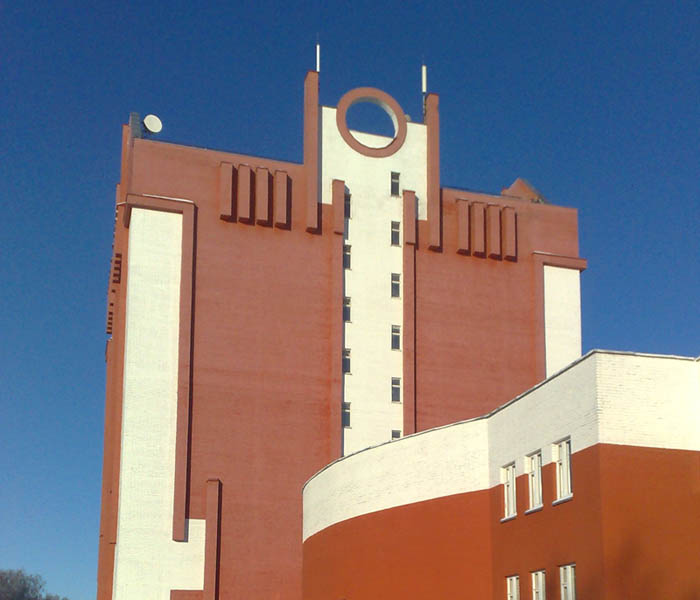
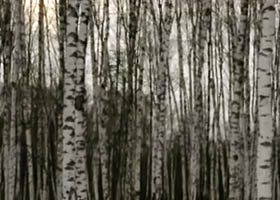
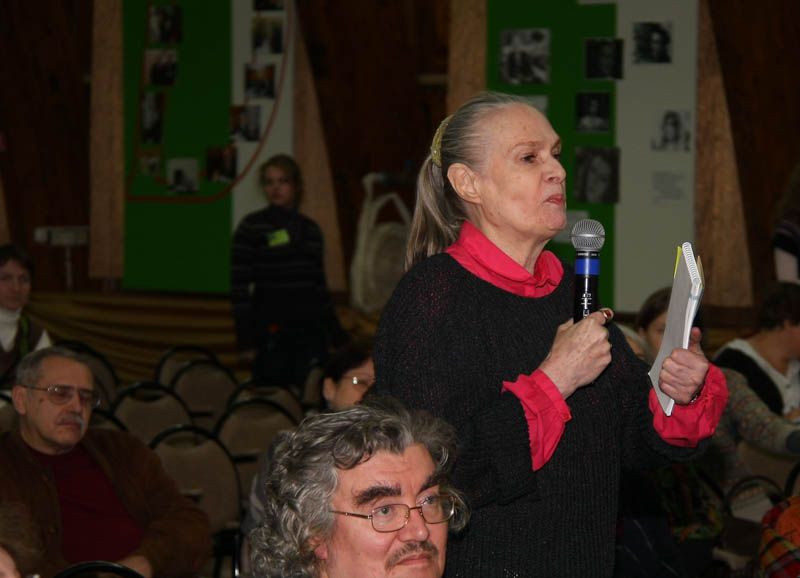
![Writer V. Aksënov in ‘Journey [Puteshestvie]’, Mosfil’m, 1966.](https://artmargins.com/wp-content/uploads/2018/04/Aksenov.jpg)
![Stewardess from ‘Journey [Puteshestvie]’, Mosfil’m, 1966.](https://artmargins.com/wp-content/uploads/2018/04/Stewardess_1.jpg)
![Stewardess from ‘Journey [Puteshestvie]’, Mosfil’m, 1966.](https://artmargins.com/wp-content/uploads/2018/04/Stewardess_2.jpg)
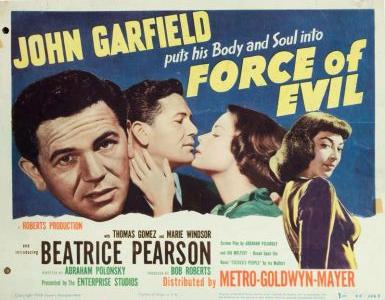
![Calling Mom. (Mama). ‘Mom [Mama]’, 2009, VGIK.](https://artmargins.com/wp-content/uploads/2018/04/Mama.jpg)
![Betrayal. ‘In-Laws [Svoiaki]’, 2009, VGIK.](https://artmargins.com/wp-content/uploads/2018/04/Svoiaki.jpg)



